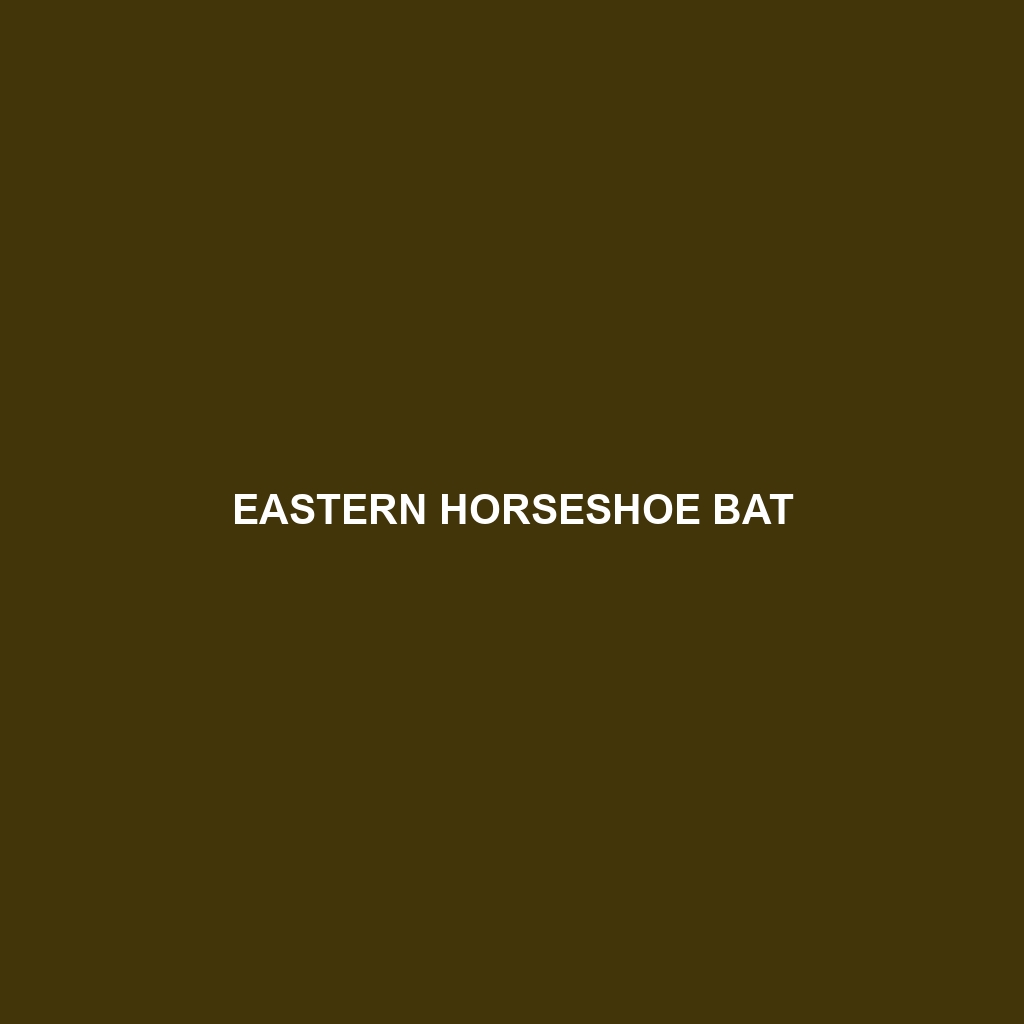McIntyre’s Horseshoe Bat
Common Name: McIntyre’s Horseshoe Bat
Scientific Name: Rhinolophus macintyrei
Habitat
McIntyre’s Horseshoe Bat is primarily found in subtropical and tropical forests, particularly in regions of Southeast Asia. This species thrives in moist environments, often inhabiting caves, limestone formations, and old growth forests, which provide critical roosting sites. Their presence is noted in countries such as Myanmar, Thailand, and Malaysia, making it crucial for conservation efforts in these areas.
Physical Characteristics
McIntyre’s Horseshoe Bat typically measures about 5 to 7 cm in body length with a wingspan ranging from 30 to 35 cm. They exhibit a distinctive horseshoe-shaped structure on their nose, which aids in echolocation. The fur is generally dark brown to reddish-brown, with lighter underparts. Their large, rounded ears and small eyes set them apart from other bat species, making them easily recognizable.
Behavior
This species is nocturnal and highly active during the night. McIntyre’s Horseshoe Bat is known for its agility in flight, which it uses to navigate through dense forests while foraging for food. They are social creatures, often roosting in groups, which facilitates communication through echolocation calls. They also exhibit territorial behavior, defending their roosting sites from intruders.
Diet
McIntyre’s Horseshoe Bat primarily feeds on insects, particularly moths and beetles. They use echolocation to hunt, detecting prey in complete darkness. This diet plays a significant role in controlling insect populations, contributing to the overall health of the ecosystem. Their feeding habits also align with the behavior of other insectivorous bats, making them an integral part of the food web.
Reproduction
The breeding season for McIntyre’s Horseshoe Bat typically occurs during the warmer months. Females give birth to one or two pups per season, usually in safe roosting sites away from potential predators. The development period for pups lasts approximately six weeks, during which they are highly dependent on their mothers for nourishment and protection. Parental care is crucial for the survival of the young.
Conservation Status
The current conservation status of McIntyre’s Horseshoe Bat is classified as vulnerable by the International Union for Conservation of Nature (IUCN). Habitat loss due to deforestation and mining activities poses significant threats to their populations. Conservation efforts are critical to protect their habitats and ensure the survival of this unique bat species.
Interesting Facts
McIntyre’s Horseshoe Bat is known for its unusual feeding behaviors, which include hunting in tight spaces where other bats may struggle. Additionally, they are less studied than other bat species, making them a subject of interest for researchers focused on biodiversity.
Role in Ecosystem
As an insectivore, McIntyre’s Horseshoe Bat plays a vital role in maintaining the ecological balance by controlling insect populations. Their presence benefits agricultural activities, as they help reduce crop-damaging pests. Furthermore, as prey for larger predators, they contribute to the food chain, demonstrating a complex interdependence within their ecosystem.
